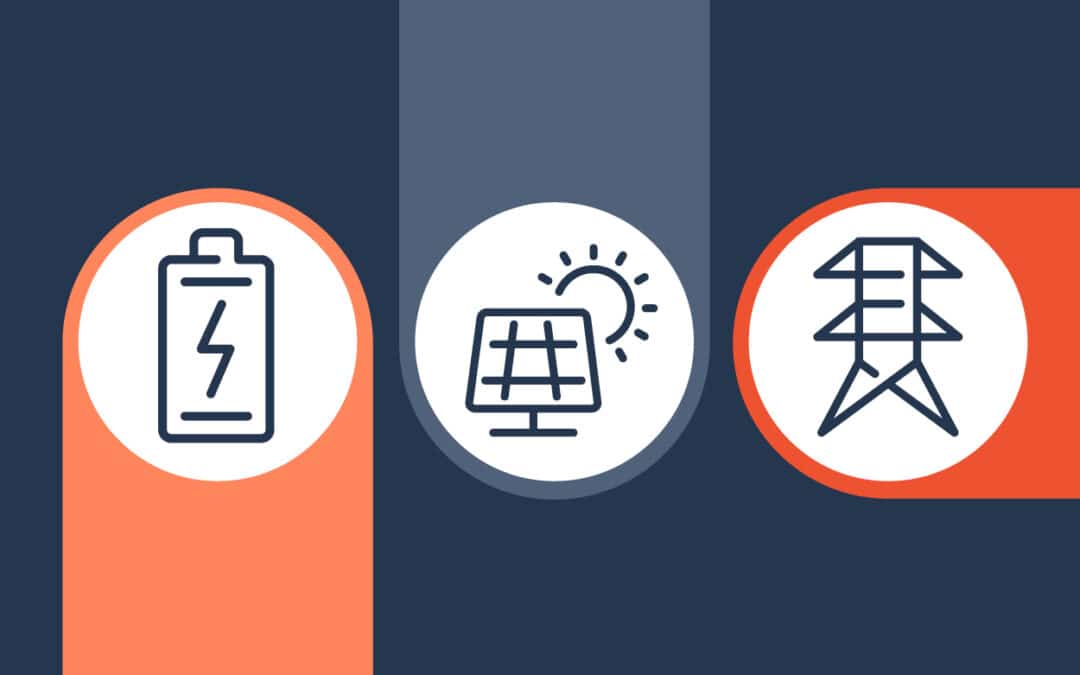In a recent conversation with Steve Pullins, the CTO, and SVP at Alpha Struxure, we delved into microgrids and their pivotal role in the energy transition. As an expert with decades of experience in the energy sector, we covered a lot of ground. Below is a summary of the key insights, including the many benefits microgrids for businesses and some misconceptions that have held businesses back from deploying microgrids sooner.
“If you have desires for a long-term business you should be considering a microgrid because it is going to save you money in the long haul.” – Steve Pullins
Microgrids as a Holistic Energy Solution
Microgrids are more than just a backup power solution. They are a holistic approach to energy management. When looking at energy challenges, such as poor reliability, resiliency in the face of outages, and pollution, it can be tempting to address each issue with an individual solution. However, microgrids can solve multiple objectives at the same time. By integrating various energy sources and technologies, microgrids simultaneously enhance grid efficiency, reduce carbon footprint, and provide reliable power in the face of disruptions. This multifaceted approach sets microgrids apart from the previous approach to onsite energy system solutions or Distributed Energy Resources (DER), which often focus on solving single problems.
“Microgrids use multiple technologies integrated in an intelligent way to solve multiple objectives at the same time. And that gives energy users system efficiency, that gives them capital efficiency and that gives them a lower carbon footprint. They also get flexibility to solve reliability and resilience issues.” – Steve Pullins
Advantages of Microgrids for Businesses
In the commercial and industrial space, interest in microgrids is growing, driven by several factors:
- The increasing cost of traditional energy sources: Overall, the cost of electricity for businesses is increasing substantially. Not only is the cost of traditional energy sources escalating, but the rate of escalation is uncertain—it’s difficult to predict where the cost will be in a year, two years, or five years from today. This is prompting business leaders to seek out onsite energy solutions link microgrids, allowing them to create long-term, hedged positions for electricity.
- Growing sustainability efforts: With the push for sustainability leading to a greater emphasis on renewable energy and carbon reduction, microgrids utilizing clean energy sources and energy storage are an attractive solution.
- Service disruptions: The need for resilient energy systems, capable of withstanding natural disasters and other disruptions, is becoming more apparent as extreme weather events occur with increasing regularity.
- Grid capacity: Amid the growing electrification of daily life, including the rise of electric vehicles (EVs) and electric-powered homes, microgrids offer an independent, reliable energy source as the larger grid load increases. Many utilities simply do not have the capacity available to meet additional customer demand.
“If you take a look at industry in general, the energy component of their cost of doing business is somewhere between 6% and 25%. But if you take energy away, everything else doesn’t work. So, from a risk profile perspective, it’s highly leverageable. Companies are getting smart about that and starting to make different choices about where their energy is coming from.” – Steve Pullins
Common Misconceptions
The most prevalent misconception about microgrids is that they are perceived as too expensive. The general assertion is that the implementation will be cost-prohibitive and the business will not see a return on investment. However, this perspective stems from a narrow focus on comparing the upfront costs of a microgrid with the current utility rates, rather than considering the long-term benefits and savings that a microgrid can provide over its lifespan. When assessing a microgrid solution it is essential to look at the total cost of ownership over the next 10 – 20 years, as opposed to just comparing current prices, to fully understand the economic advantages of microgrid implementation.
Many people think that microgrids introduce more vulnerability because they aren’t connected to the grid, thus a business would be reliant solely on the system. The reality is that microgrids have a physical connection to the utility grid, while also having the capability to disconnect and operate independently as an islanded system. This flexibility allows microgrids to provide critical services to the utility grid, such as frequency and voltage regulation, demand response, and real and reactive power support.
The economic viability of grid-connected microgrids has been demonstrated in various sectors, including educational campuses, medical complexes, public safety facilities, military bases, agricultural farms, commercial buildings, and industrial facilities. These microgrids provide reliable and high-quality power supply to these areas, while also offering grid services to enhance the overall stability and reliability of the utility grid. With the increasing popularity of battery energy storage systems, microgrids are expected to play an even more significant role for businesses looking to achieve a higher degree of control.
Microgrids offer stackable benefits and are ready for large-scale deployment now. Moreover, microgrids are positioned to integrate newer energy sources, like renewable natural gas and green hydrogen, offering viable ways to reduce carbon emissions without significant changes to existing infrastructure. As businesses navigate the challenges of the modern energy landscape, microgrids offer an effective solution for building a robust onsite energy system.
You can hear our full conversation with Steve by listening to Episode 28 of Renewable Rides here.


